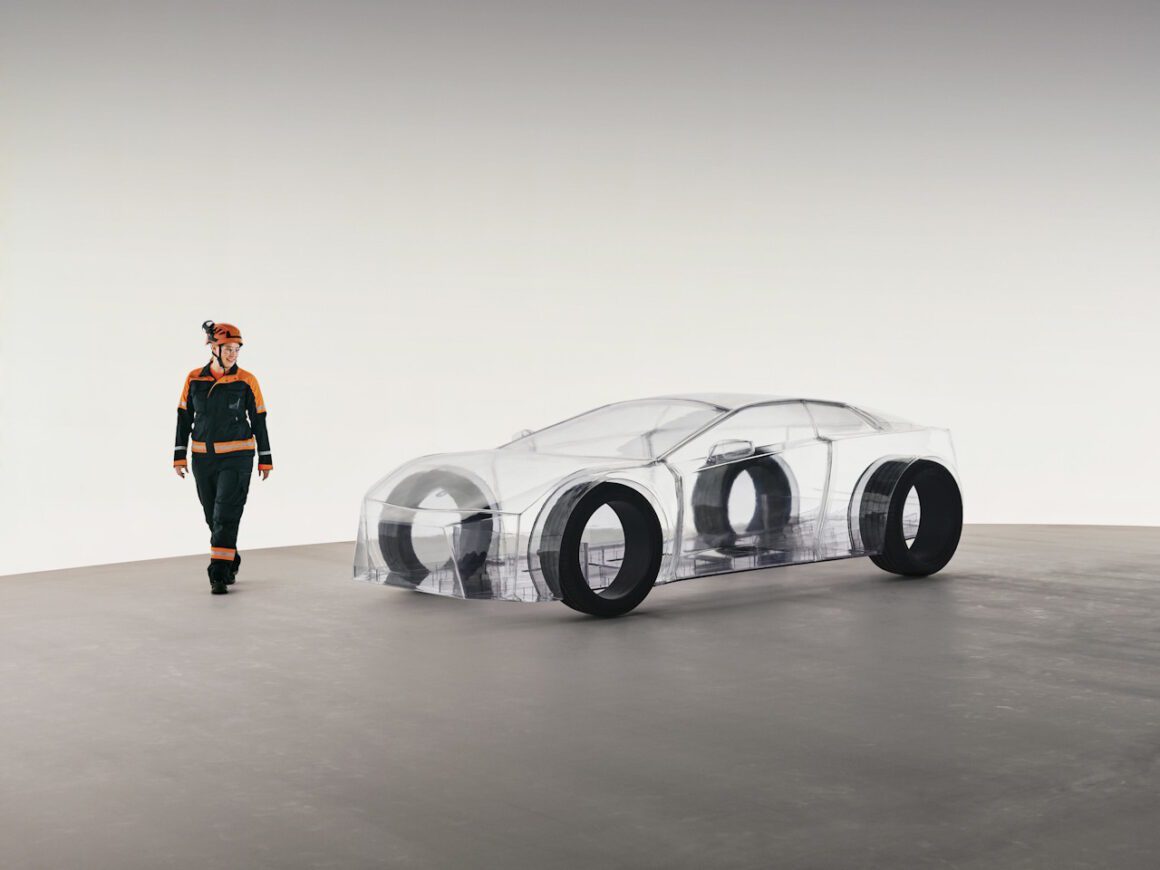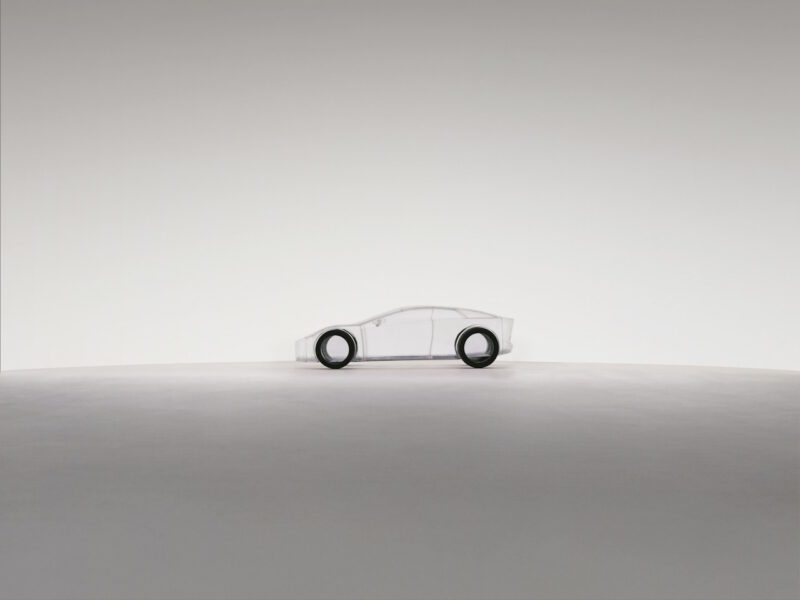Swedish industrial engineering group Sandvik has unveiled what it cheekily describes as the world’s first electric car made without metals or minerals. And, as can be imagined, it’s little more than a transparent shell.
Sandvik was founded in 1862 and has grown to become a leading provider of products and solutions for mining and rock excavation, rock processing, and component manufacturing.
In an effort to highlight the importance of mining to the global energy transition – it says more than 90 per cent of an average electric vehicle is made from resourced derived from mining – it unveiled the eNimon (no mines written in reverse).
“Without mining, there are no EVs, no wind turbines, no solar panels,” said Mats Eriksson, president at business area mining at Sandvik. “Sustainable mining is the backbone of the green transition and fundamental to achieving global sustainability goals.”
“That’s why Sandvik has unveiled the eNimon – an electric car made without metals or minerals … it is completely transparent, lacks all characteristics that make a car a car, and it can’t move an inch.
“Simply put, it shows a future without access to mined metals and minerals.”

Sandvik highlights 18 key materials that will be needed for the energy transition, including well-known minerals like lithium, copper, and nickel, through to the more obscure dysprosium, neodymium, and praseodymium.
Meeting global net-zero goals by 2050 is expected to require up to five times more production of lithium, nickel, and cobalt, compared to today’s levels, it says.
Sandvik says sustainable mining practices need to be scaled up so that material shortages do not threaten both climate targets or global electrification and decarbonisation efforts.
In the view of Sandvik, the modern underground mine will be “invisible, autonomous, electrified, digitalized, and optimizes itself in real time with continuous data collection” with the use of automated battery-electric vehicles and software removing the need for people underground.

“eNimon symbolises what’s at stake if the world fails to recognize and expand mining’s essential contributions to sustainable development,” said Eriksson.
“This installation challenges perceptions of mining—not as a dirty, outdated industry, but as a high-tech, innovative and essential enabler of the green technologies shaping our future.”
The eNimon car installation is currently on display at the National Museum of Science and Technology in Stockholm, Sweden.
Joshua S. Hill is a Melbourne-based journalist who has been writing about climate change, clean technology, and electric vehicles for over 15 years. He has been reporting on electric vehicles and clean technologies for Renew Economy and The Driven since 2012. His preferred mode of transport is his feet.

